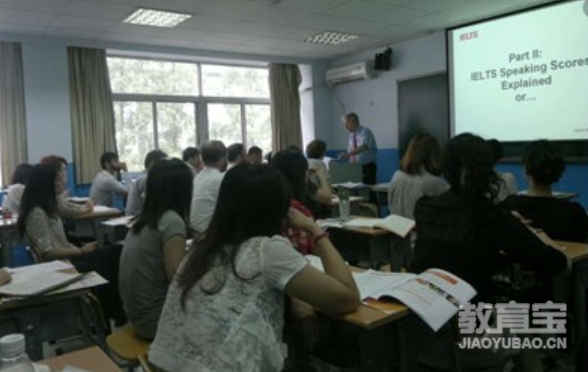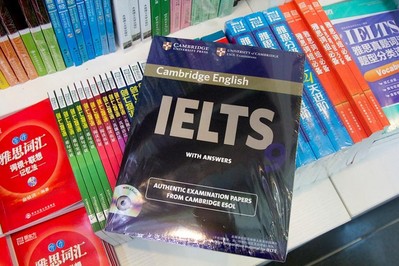 返回
教育头条
返回
教育头条

分享雅思阅读中常见的三种信号词
在雅思阅读考试中我们可以借助一些信号词来帮助我们理解文章内容,快速进行答题。那么雅思阅读中常见的信号词有哪些呢?今天为大家分享雅思阅读中常见的三种信号词,大家可以学习一下,在备考中也注意积累信号词。
常见信号词1
表达主观观点statements, opinions
例词: say, believe, argue that, maintain that, claim…
考点:The UCSF researchers maintain that the simplest and most cost-effectiveaction is to establish smoke-free work places, schools and public places. (C3,P20, T27分类题)
解析:这道分类题考察区分a finding和an opinion.表达个人观点(anopinion)带有一定的主观性,所用的信号词显然与客观事实发现(afinding)的有所区别。除了上面列举的例词之外,很多表达主观想法的雅思阅读考试词汇都可以做这样的判断。
常见信号词2、表达客观结论findings
例词: indicate that, suggest that, find out, conclude that, point out, reportthat, demonstrate that…
考点:But Byers points out that the benefits of increased exercise disappearrapidly after training stops, so any improvement in endurance resulting fromjuvenile play would be lost by adulthood.(C4, P50, T38配对题)
解析:配对题目是典型的人名和成果的配对,我们到文章中定位人名就比较好找到答案,可是人名出现的地方就一定是考点么?不见得。但是一旦表达客观结论的信号词与人名同时出现时,就是考点出没的地方了。这类观点信号词在雅思阅读考试中还是比较容易找到,也就比较容易定位的。

常见信号词3、特殊符号
例词: ‘word’, ——, word…
考点:In very significant cases of role change, e.g. from a soldier in theranks to officer, from bachelor to married man, the change of role has to have avery obvious sign, hence rituals.(C3, P48, T37完成句子)
解析:文中斜体的部分其实就是考察的考点,不知道这个词语的意思没有关系,只要能判断,需要填写的单词是斜体部分,照抄过来就可以轻松拿分。
以上是为大家介绍的雅思阅读中常见的三种信号词,大家可以结合有效的练习多积累多总结,在考试实战中能快速准确的进行答题。
常见信号词1
表达主观观点statements, opinions
例词: say, believe, argue that, maintain that, claim…
考点:The UCSF researchers maintain that the simplest and most cost-effectiveaction is to establish smoke-free work places, schools and public places. (C3,P20, T27分类题)
解析:这道分类题考察区分a finding和an opinion.表达个人观点(anopinion)带有一定的主观性,所用的信号词显然与客观事实发现(afinding)的有所区别。除了上面列举的例词之外,很多表达主观想法的雅思阅读考试词汇都可以做这样的判断。
常见信号词2、表达客观结论findings
例词: indicate that, suggest that, find out, conclude that, point out, reportthat, demonstrate that…
考点:But Byers points out that the benefits of increased exercise disappearrapidly after training stops, so any improvement in endurance resulting fromjuvenile play would be lost by adulthood.(C4, P50, T38配对题)
解析:配对题目是典型的人名和成果的配对,我们到文章中定位人名就比较好找到答案,可是人名出现的地方就一定是考点么?不见得。但是一旦表达客观结论的信号词与人名同时出现时,就是考点出没的地方了。这类观点信号词在雅思阅读考试中还是比较容易找到,也就比较容易定位的。

常见信号词3、特殊符号
例词: ‘word’, ——, word…
考点:In very significant cases of role change, e.g. from a soldier in theranks to officer, from bachelor to married man, the change of role has to have avery obvious sign, hence rituals.(C3, P48, T37完成句子)
解析:文中斜体的部分其实就是考察的考点,不知道这个词语的意思没有关系,只要能判断,需要填写的单词是斜体部分,照抄过来就可以轻松拿分。
以上是为大家介绍的雅思阅读中常见的三种信号词,大家可以结合有效的练习多积累多总结,在考试实战中能快速准确的进行答题。
以上就是教育宝头条带来的分享雅思阅读中常见的三种信号词详细介绍,想要查看更多雅思资讯,敬请关注教育宝头条,也可以加我微信18560125702,我会解答你的学习问题。返回教育宝头条
【免责声明】本文仅代表作者本人观点,与教育宝无关。教育宝对文中陈述、观点判断保持中立,不对所包含内容的准确性、可靠性或完整性提供任何保证。请读者仅作参考,特此声明!





